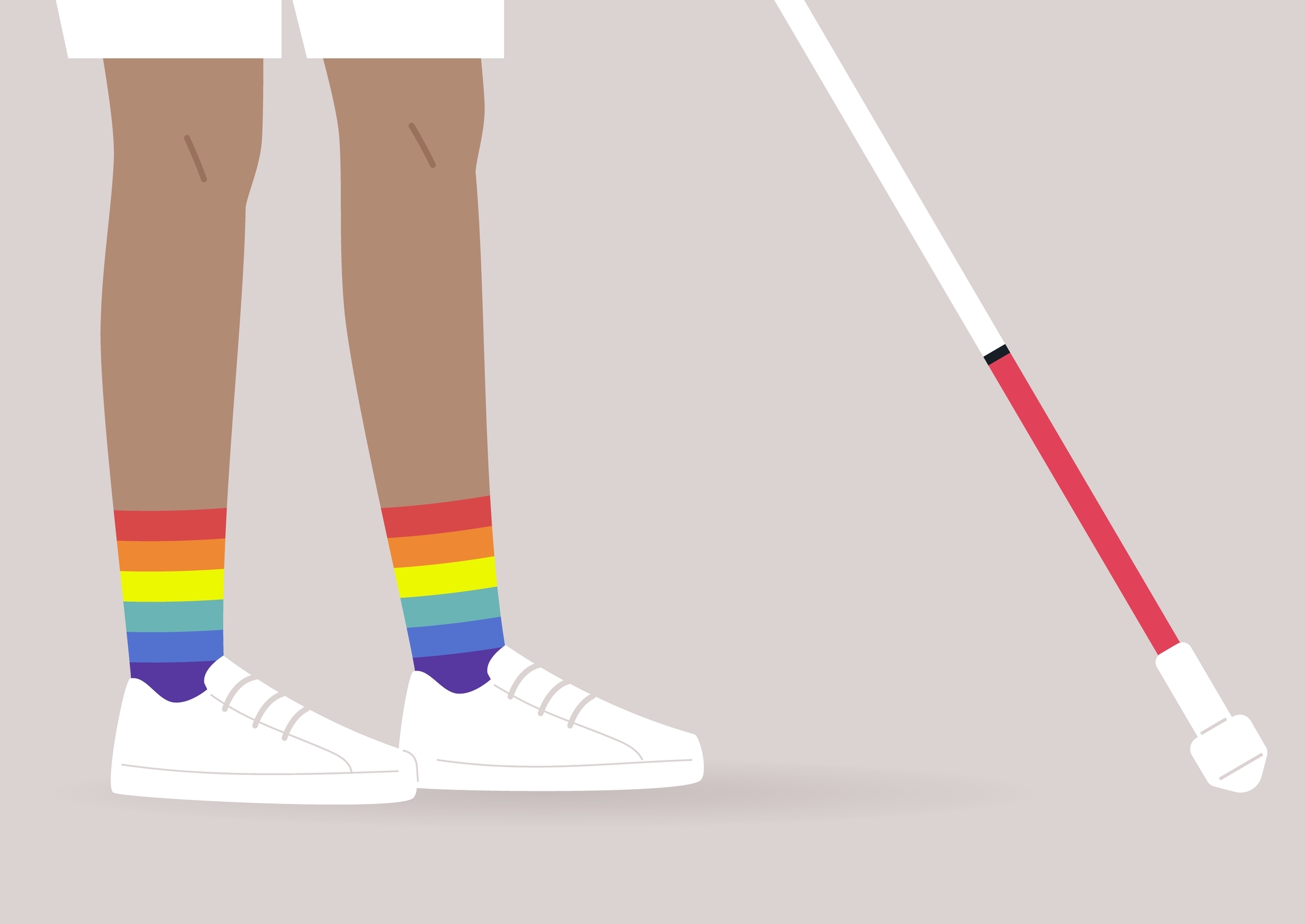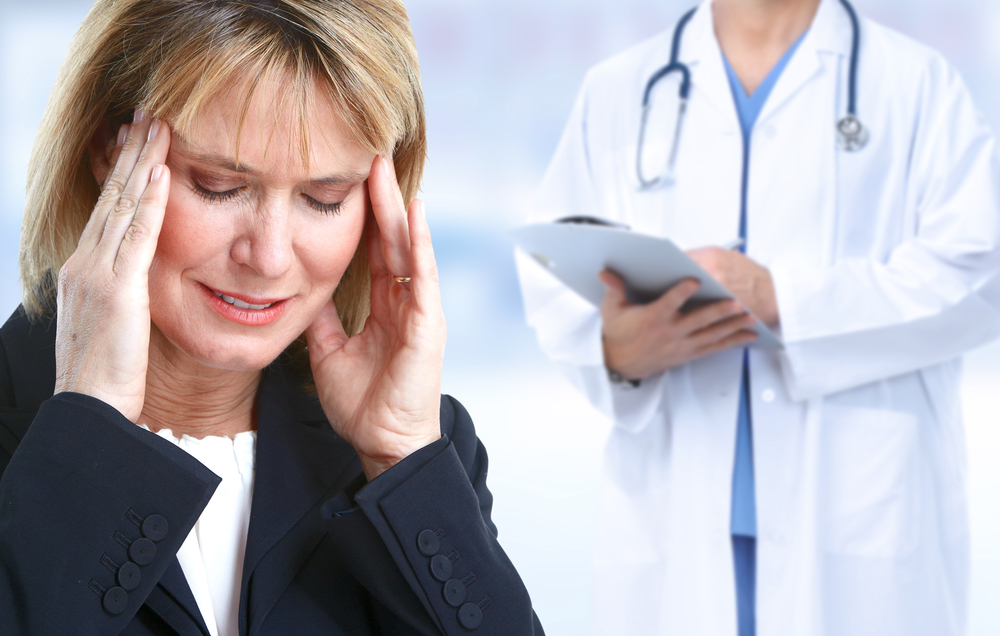CONTENT NOTE: ableism
Today, at 71, I’m an out and proud queer, disabled, cisgender woman. I’m also a writer and poet.
I’m open about being legally blind. Tapping my white cane, reading my poetry from text blown up large on my iPad, my low vision is out there for everyone to see. Being low vision is as natural to me as breathing.
Like many of us who came up in a culture steeped in anti-queerness and ableism, I still find myself, from time to time, drowning in moments of shame. I recently found myself apologizing when I saw my eye doctor. “I’m sorry for asking you to dim the lights so I can see the eye chart,” I told the technician.
“You don’t need to apologize,” she said.
Yet, despite these momentary blips of shame, I’m as proud of being a part of the disabled community and disability history as I am of being a part of the queer community and queer history.
But developing pride is far from easy. It takes work. “You get proud by practicing,” the late disabled, queer poet Laura Hershey wrote in her poem of the same name.
I was born disabled. But I didn’t begin to come out and become proud until nearly 50 years ago, in the summer of 1974.
I first learned I was disabled when I was five years old. As long as I said I had some vision (nevermind that it was extremely limited), I could show my face in society. I wouldn’t embarrass my family, scare the neighbors, or frighten strangers.
Being blind was shameful, pathetic—only for beggars hanging out with their tin cups. Except, of course, for the blind musical genius of Ray Charles or Stevie Wonder, who could really sing! Or DeafBlind saint Helen Keller, who’d been “saved” by Annie Sullivan, the miracle worker. (No one ever mentioned that Annie was low vision like me.)
Being a creature of my era I, too, had ableist attitudes towards disability and disabled people for much of my youth. From the time I was a kindergartner—trying to understand why I shouldn’t allow anyone to call me blind—to my early 20s, I was uncomfortable with my own disability and around others with disabilities.
Because I didn’t want to be identified as blind, I didn’t use a cane then, even though I often bumped into walls and sometimes fell down steps. Why did I not get training on how to travel safely—and with self-confidence—with a cane?
But in my junior and senior years of college, I slowly began to feel more comfortable in my skin.
The burgeoning women’s movement (what we now call second wave feminism) began to resonate with me. As a student at a women’s college, I learned that women didn’t have to marry or wear makeup or heels. That we would likely encounter sexism. But we could aim for careers in everything from the arts to medicine and law.
Today I can see what a white, binary version of feminism this was. But it offered liberating possibilities to me and others of my generation, who grew up in a culture of rigid gender and sexual roles. Where a single woman couldn’t get a credit card. A woman who didn’t marry and have kids was considered abnormal (unless she was disabled, of course). And a man would be called “queer” (as a slur) if he cried or liked to cook.
Just a few years after the Stonewall Uprising, I also started to realize (and even enjoy) that I was queer. I’d had feelings that I liked girls since I was 13, but I’d repressed these feelings because “nice” girls weren’t supposed to “like” girls.
But, as I began to hang out with other queer college students, some of whom had marched in Pride parades, I finally began to embrace my sexuality. It would be a while before I had my first same-sex relationship. But I remember watching “The Wizard of Oz” in the late 70s as I held hands with a woman, shortly after I’d come out to myself as queer. I’d never been more happy to see a rainbow!
At this juncture in life, some of my friends and teachers began to nudge me toward at least acknowledging my disability as well, if not outright identifying as disabled. And then I was told about the Perkins School for the Blind in Watertown, a Boston suburb.
I didn’t know what I wanted to do after graduation. But I was ready to live in a city, and I knew I’d need to learn how to safely navigate an urban area. I enrolled in a summer program at Perkins which taught Blind and Low Vision people how to get around safely.
I hadn’t met more than two blind people in my life or crossed a city street alone. I’m not sure which was more terrifying to me: learning to listen to traffic and create an “arc of travel” with my cane or being among a throng of about 50 Blind and Low Vision students and staff.
But I had no idea that this summer would be life-changing.
I began to talk with other Blind and Low Vision people. I discovered that they weren’t “creatures from the Black Lagoon.” Hailing from all over the United States and the world, they were smart, funny and kind. One was a singer who’d performed on talk shows. Another was a baseball fan. Some were cranky. They’d joke about being blind.
We told our stories to each other. I’d often felt that I’d been alone, that I’d been the only one to have been bullied, ridiculed because of my disability. But it turned out that I was far from unique. We’d all been teased, verbally put down, not picked for teams or class offices. Some of us had been beaten up on the playground in elementary school or in the halls of high school.
Gradually, I became aware that there was discrimination against disabled people.
I’d always felt that non-disabled folk didn’t like to be around people like me. But I finally realized that this wasn’t just a “feeling.” Disability-based prejudice was a real thing.
The culmination of my Low Vision coming out process was discovering that people with disabilities have rights. That, though discrimination complaints are quite difficult to win, we can seek legal redress if we encounter disability-based discrimination.
After years of protest, including a historic 1977 sit-in, Section 504 of the 1973 Rehabilitation Act was finally signed in April 1977. Section 504, the precursor to the Americans with Disabilities Act, prohibits hospitals, libraries, schools, courts, and other institutions that receive federal funding from discriminating against disabled people.
Looking back over the half century since that groundbreaking law, how different my life has been from what I expected!
I met, fell in love with and, until her death from cancer, had a long, loving relationship with Anne—the love of my life. Since the early 1990s, I’ve found fulfilling work as a freelance journalist. I’ve written about everything from the role of disabled people in World War II to the hidden history of Helen Keller and an ongoing series for the Washington Blade on people who identify as queer and disabled. I’ve had an essay published in The New York Times, the paper of record. My poem, “Tasting Braille,” has been the Poetry Foundation’s Poem of the Day. I’ve had a wonderful life.
Kathi Wolfe (she/her) is a writer and poet. Wolfe’s commentary and essays have appeared in The New York Times, The Washington Post, The Progressive Media Project, and others. She has been a Rosalynn Carter Mental Health Journalism Fellow, and was awarded a mini-fellowship from the Kaiser Family Foundation and the National Press Foundation to report on assisted suicide and people with disabilities. Wolfe is a longtime contributor to the Washington Blade, the acclaimed LGBTQ+ paper.




